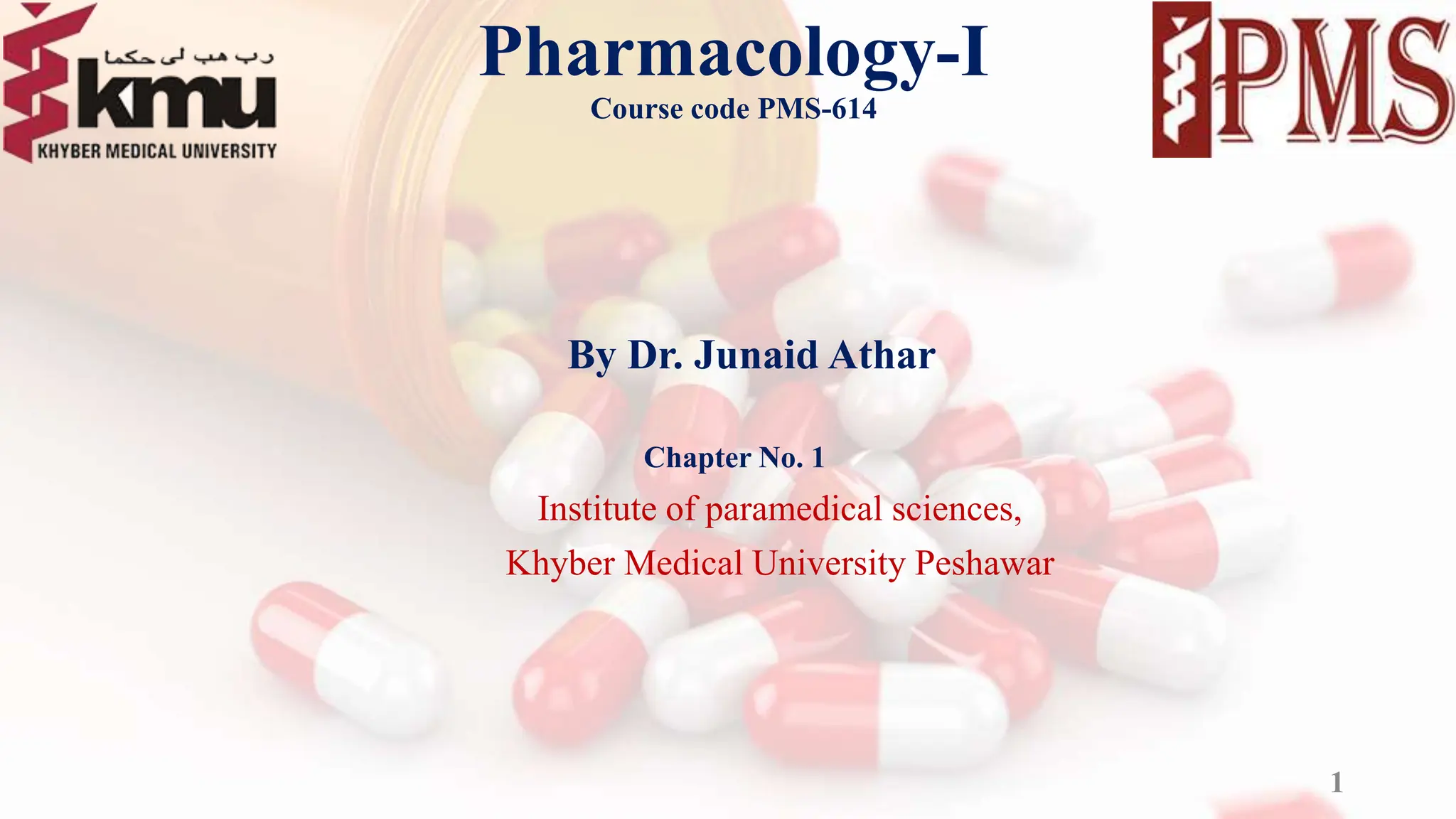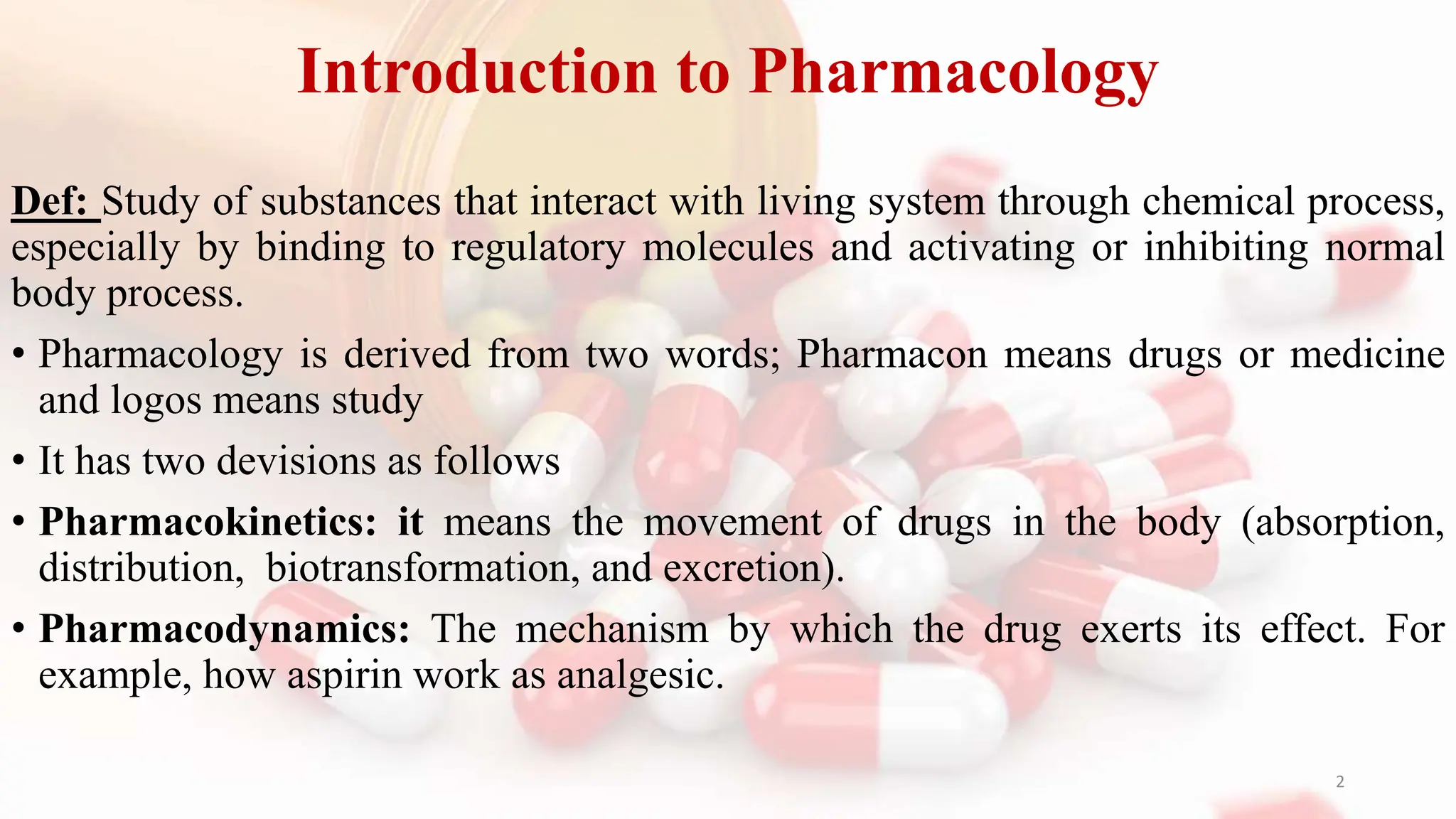This document provides an introduction and overview of key concepts in pharmacology. It defines pharmacology and divides it into pharmacokinetics and pharmacodynamics. It also defines common terms like drug, medicine, dosage, toxicity, and adverse reactions. The document outlines classifications of drugs based on their mechanism of action, therapeutic use, and chemical composition. It discusses factors that influence adverse drug reactions and ways to prevent such reactions.


























